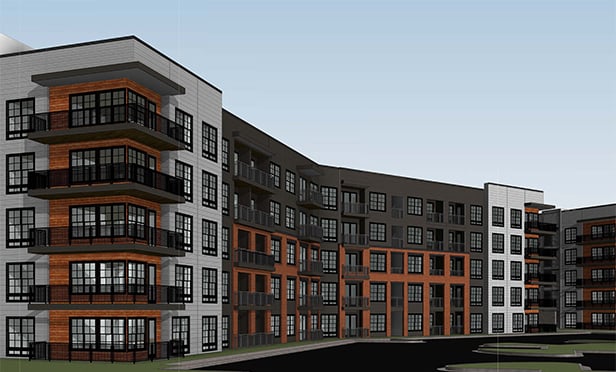NEW YORK CITY—Although some concerns have been raised over a gradual decline in underwriting standards for the current generation of CMBS loans, these concerns haven't been reflected in the loans' actual performance as yet. Fitch Ratings says few CMBS 2.0 loans from 2010 on have entered special servicing, and the status quo is likely to remain in place at least until maturity dates draw nearer.
“In-place cash flow is generally sufficient and CMBS 2.0 loans will continue to benefit from low interest rates,” according to Fitch. It's one reason that just 0.1% of the Fitch-rated CMBS 2.0 loans have gone into special servicing: 27 conduit loans with a combined balance of $282 million.
Simple arithmetic would suggest that the loans that have gone to the special servicer tend to be smaller, and Fitch says these loans average $10.5 million with 18 of the 27 coming in below $10 million. That being said, Trepp notes that the largest CMBS 2.0/3.0 loan in special servicing got there earlier this month: a $50.1-million securitization backed by the Hudson Valley Mall in Kingston, NY.
Trepp says the mortgage, which has a 6.739% rate, was placed on the watchlist in July of 2014 after its debt service coverage ratio dropped to 1.08x “due to declining average rent and a 90% occupancy rate.” Although the mall was able to bring in some new tenants—often at lower rents—anchor JC Penney announced in January that it would be vacating its 67,000-square-foot parcel by April, two years ahead of schedule.
Fitch notes that the 34-year-old mall represents 8.6% of the CFCRE 2011-C1 transaction. Leases for all but one of its anchor tenants, aside from the already vacated JC Penney location, are due to expire in 2017. A number of junior anchor stores have lease maturities this year and next.
“Cash flow at the property faces the potential for further decline given the JC Penney closure as well as the upcoming lease maturities of the anchors,” according to a Fitch report. Additionally, “junior anchors and other tenants with lease clauses will allow them to leave if sales do not improve.”
The second largest specially serviced loan in CMBS 2.0 is another retail property. The Commons at Manahawkin Village represents 2.3% of the WFRBS 2011-C3 transaction, with the loan secured by a 326,128-square-foot shopping center in Manahawkin, NJ, roughly half the size of Hudson Valley Mall.
“The property historically has had stable financial performance,” according to Fitch. However, the loan has been chronically late on payments since its inception four years ago and eventually defaulted. The loan, which had been on servicers' watchlist since September 2012, was transferred to special servicing a year later. The mezzanine lender cured the default and pursued UCC foreclosure. The borrower filed for bankruptcy protection in December 2013; Fitch notes that the most recent appraisal on the property is in excess of the debt.
When the first CMBS 2.0 defaults began appearing in May of last year, Fitch noted that some risk of the default rate increasing was posed by higher leverage and more aggressive underwriting. However, the main long-term threat is balloon risk. “'If interest rates are substantially higher when the CMBS loan matures, refinancing is likely to be more difficult unless there is some appreciation in cash flow,” Brook Sutherland, Fitch's US CMBS director, said last May.
© Touchpoint Markets, All Rights Reserved. Request academic re-use from www.copyright.com. All other uses, submit a request to [email protected]. For more inforrmation visit Asset & Logo Licensing.







